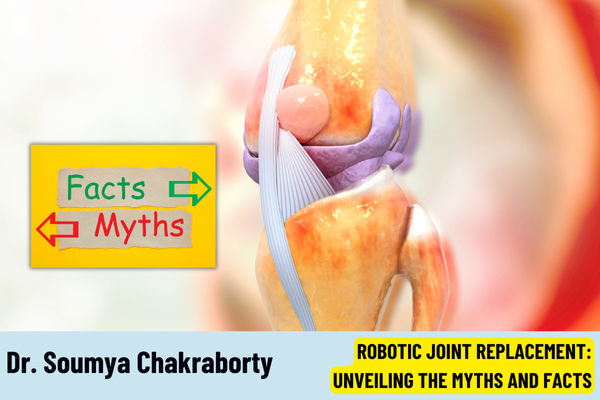Robotic joint replacement surgery is a cutting-edge advancement in orthopedic care, offering precision and improved outcomes for patients undergoing joint replacement. However, with innovation comes a swirl of myths and misconceptions. Dr. Soumya Chakraborty, one of the best orthopedic surgeons in Kolkata, provides a clear perspective on robotic joint replacement, separating fact from fiction.
What is Robotic Joint Replacement?
Robotic joint replacement involves the use of robotic systems to assist surgeons in performing joint replacement procedures with enhanced precision. The technology aids in the accurate placement of implants, customization of surgical plans, and improved alignment, which can contribute to better outcomes and quicker recovery times.
Common Myths vs. Facts
Myth 1: Robots Perform the Surgery Alone
Fact: Robotic systems are tools used by skilled orthopedic surgeons to enhance precision. The robot assists but does not perform the surgery independently. The surgeon remains in control throughout the procedure, using the robot to achieve higher accuracy and better alignment of implants.
Myth 2: Robotic Surgery is More Dangerous
Fact: Robotic joint replacement is as safe as, if not safer than, traditional surgery. The precision provided by robotic systems can reduce the risk of complications, improve implant placement, and enhance overall surgical outcomes. The technology also allows for minimally invasive techniques, which can result in less pain and faster recovery.
Myth 3: Robotic Surgery is Only for Complex Cases
Fact: While robotic surgery is beneficial for complex cases, it is also advantageous for standard joint replacements. The technology allows for better customization of surgical plans, regardless of the complexity, leading to improved results for all patients.
Myth 4: The Cost of Robotic Surgery is Prohibitive
Fact: While robotic joint replacement may have higher upfront costs compared to traditional methods, the overall cost may be offset by the benefits of reduced hospital stays, fewer complications, and quicker recovery times. Many healthcare facilities offer robotic joint replacement as part of their standard services, making it more accessible to patients.
Myth 5: Recovery Time is the Same as Traditional Surgery
Fact: Patients who undergo robotic joint replacement often experience faster recovery times compared to traditional methods. The precision of the robotic system contributes to less trauma to surrounding tissues, which can lead to reduced pain and quicker rehabilitation.
Benefits of Robotic Joint Replacement
- Enhanced Precision: Robots provide detailed imaging and real-time feedback to ensure precise placement of implants, which can improve the longevity and functionality of the joint.
- Customized Surgical Planning: The technology allows for a tailored approach to each patient’s anatomy and needs, optimizing surgical outcomes.
- Minimally Invasive Techniques: Robotic systems enable smaller incisions, which can lead to less postoperative pain, faster healing, and reduced risk of infection.
- Improved Alignment and Longevity: Accurate placement of implants can result in better alignment and function, potentially extending the life of the joint replacement.
Conclusion
Robotic joint replacement represents a significant advancement in orthopedic surgery, offering numerous benefits for patients seeking joint replacement. By understanding the facts and dispelling the myths, patients can make informed decisions about their treatment options. Dr. Soumya Chakraborty, a leading orthopedic surgeon in Kolkata, emphasizes the importance of discussing all available options with your healthcare provider to choose the best approach for your individual needs. With the support of advanced technologies like robotic systems, achieving optimal outcomes in joint replacement is more achievable than ever.

